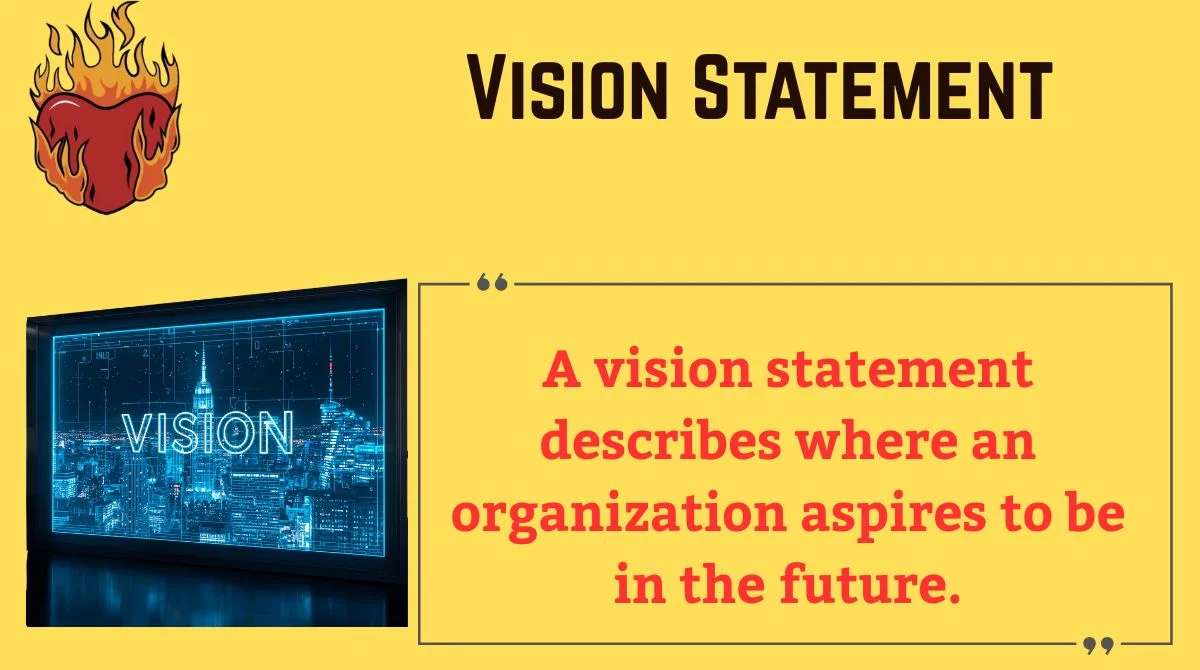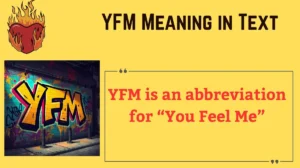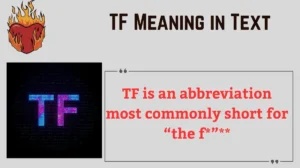A company without a clear vision statement often drifts without direction, much like a ship without a compass. A vision statement isn’t just a catchy slogan—it’s the blueprint for the future.
It guides strategy, shapes culture, and inspires every person connected to your organization. This article dives deep into what a vision statement is, how to write one, and how to make sure it drives real change.
What Is a Vision Statement

A vision statement describes where an organization aspires to be in the future. It paints a picture of what success will look like years down the road, usually five to ten years or more. Unlike a mission statement, which explains what a company does today, a vision statement is about tomorrow.
Think of it as a north star: it guides decisions, energizes employees, and tells the world what you’re aiming to achieve. It should be short, inspiring, and memorable, but also rooted in reality.
Core Attributes of a Strong Vision Statement
- Future-focused: Shows where you’re going, not where you are now.
- Aspirational but achievable: Big enough to inspire, grounded enough to reach.
- Clear and memorable: People should be able to repeat it easily.
- Emotionally resonant: It should spark pride and motivation.
Vision Statement vs. Mission Statement vs. Core Values
Companies often confuse these three terms. Here’s a quick comparison:
| Aspect | Vision Statement | Mission Statement | Core Values |
|---|---|---|---|
| Focus | Future aspirations | Current purpose | Guiding principles |
| Time Frame | Long-term (5–10+ years) | Present day | Timeless |
| Purpose | Shows where you’re heading | Explains what you do | Explains how you behave |
| Example | “A world without hunger.” | “We provide nutritious meals to communities in need.” | “Integrity, empathy, innovation.” |
A vision statement is the destination. A mission statement is the journey. Values are how you travel.
Strategic Foundations Before Writing
Before you write a vision statement, you need a solid foundation. Without it, your statement risks being vague or disconnected from reality.
- Understand your market position. Where do you stand in your industry today?
- Clarify your audience. Who are you serving now and in the future?
- Analyze competitors. Knowing what others aim for can help you position your own vision uniquely.
- Ensure leadership alignment. A vision statement written by marketing alone won’t work—it needs buy-in from leadership and key stakeholders.
Quote: “A vision without strategy remains an illusion.” – Lee Bolman
Step-by-Step Framework to Write a Vision Statement
Writing a vision statement doesn’t happen in one sitting. Here’s a clear, actionable framework:
Assemble the Right Team
Include leadership, key stakeholders, and even front-line employees. Diverse input ensures your vision reflects the organization as a whole, not just one department.
Audit Current Messaging
Review your mission statement, brand materials, website, and public communications. Look for themes that reflect your current identity and aspirations.
Identify Future State Goals
Ask: Where do we want to be in 5, 10, or 20 years? Think about markets, technology, social impact, and scale. Map out your ultimate destination.
Benchmark Industry Leaders
Study strong vision statements from competitors and leaders in other industries. Look for what makes them compelling—clarity, brevity, boldness.
Run Visioning Workshops
Use structured exercises, like “future headlines” (imagine a headline about your company 10 years from now). Workshops create shared excitement and deeper thinking.
Synthesize and Refine Themes
From the brainstorming, identify recurring themes. Eliminate jargon, buzzwords, and clichés. Focus on what’s authentic to your company.
Test for Impact
Share drafts with employees, partners, and even customers. Ask: Does this inspire you? Is it clear? Use the feedback to fine-tune your statement.
Write Bold, Specific, and Brief Statements
Keep it under 20–25 words. Avoid vague phrases like “be the best.” Instead, be specific: “Revolutionizing urban transport with zero-emission technology.”
Traits of an Effective Vision Statement
Great vision statements share common traits:
- Aspirational yet realistic. Avoid “pie in the sky” promises.
- Emotionally powerful. It should make people feel something.
- Easy to remember. Simplicity is power.
- Aligned with company values. Vision without values feels hollow.
Case Study: Tesla
Tesla’s vision statement—“To create the most compelling car company of the 21st century by driving the world’s transition to electric vehicles”—is bold, clear, and future-focused. It tells employees and customers exactly where the company is headed.
Implementation and Integration
A vision statement only works if it’s lived, not just framed on a wall.
- Communicate it widely. Include it in internal communications, onboarding materials, and public channels.
- Link it to strategy. Tie your goals and KPIs to your vision.
- Embed it into culture. Leaders should reference it in speeches, updates, and decisions.
- Timeline for rollout:
- Month 1: Finalize and approve the statement
- Month 2: Internal launch with training and Q&A
- Month 3+: External rollout via website, press releases, and social channels
Quick Tips & Common Mistakes
Do’s:
- Use clear, everyday language.
- Make it memorable and emotionally engaging.
- Test it with real audiences.
Don’ts:
- Don’t copy another company’s vision.
- Don’t use jargon like “maximize shareholder value.”
- Don’t make it too long.
Examples of Standout Vision Statements
Here are 10 standout vision statements (and why they work):
| Company | Vision Statement | Why It Works |
|---|---|---|
| Microsoft | “To help people and businesses throughout the world realize their full potential.” | Broad but human-focused |
| IKEA | “To create a better everyday life for the many people.” | Simple, inclusive |
| “To provide access to the world’s information in one click.” | Clear and measurable | |
| Nike | “To bring inspiration and innovation to every athlete in the world.” | Inclusive definition of “athlete” |
| “Create economic opportunity for every member of the global workforce.” | Specific, ambitious | |
| Alzheimer’s Association | “A world without Alzheimer’s and all other dementia.” | Bold and powerful |
| TED | “Spread ideas.” | Short, memorable |
| Patagonia | “We’re in business to save our home planet.” | Mission-driven |
| Disney | “To entertain, inform, and inspire people around the globe.” | Clear scope |
| Habitat for Humanity | “A world where everyone has a decent place to live.” | Direct and inspiring |
Measuring Success
A vision statement is not a “set and forget” exercise. Monitor whether it’s working:
- Employee engagement surveys. Do employees understand and feel inspired?
- Customer perception. Does your vision resonate with customers?
- Strategic alignment. Are company goals tied to the vision?
- Revisions. Review every few years to ensure it still reflects your direction.
FAQs
What’s the ideal length of a vision statement?
Keep it under 20–25 words. Brevity improves memorability and clarity.
Can a small business have a vision statement?
Absolutely. In fact, having a vision statement helps small businesses focus and grow strategically.
How often should a vision statement be updated?
Review it every 3–5 years or when your business undergoes major changes.
Should a vision statement mention profits?
No. Vision statements focus on impact and aspirations, not financial metrics.
How do you test a vision statement’s effectiveness?
Ask employees and customers if it’s clear, inspiring, and memorable. If not, refine it.
Conclusion
A strong vision statement doesn’t just inspire—it directs decisions and shapes culture. By following this framework, you can create a statement that not only sounds good on paper but also drives real action inside and outside your organization.
Think of it as the story of your future. Make it bold. Make it memorable. And most importantly, make it yours.

Mark Peter is the creative mind behind RizzleLineLove.com, your go-to hub for witty, flirty, and downright hilarious pick-up lines. With a passion for blending humor and charm, Mark crafts content that sparks conversations, breaks the ice, and adds a playful twist to everyday moments.
Whether you’re looking to impress your crush, make your friends laugh, or spice up your social media captions, his work is all about helping you connect — one clever line at a time.



